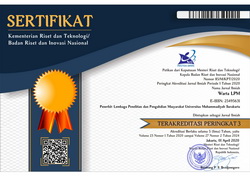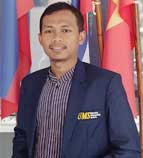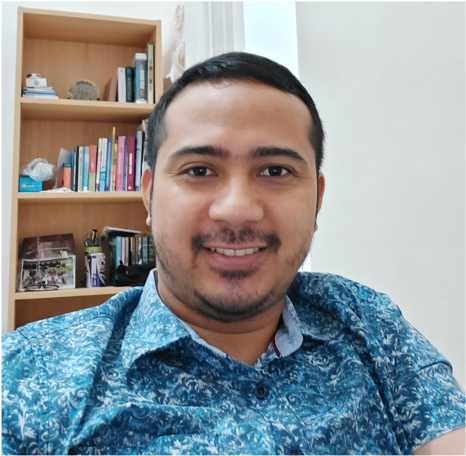Pengembangan Desa Wisata Bumi Arum Majasto berbasis Histori, Lingkungan, dan Ekonomi
DOI:
https://doi.org/10.23917/warta.v26i3.1454Keywords:
Bumi Arum Majasto, Islamic Architecture, Masterplan, Village-Owned Enterprises, Village TourismAbstract
Majasto village was designated by the government as a Religious Tourism Area through the Sukoharjo Regency Spatial Plan. However, to support this, Majasto Village does not have a good management system and regional planning of village-owned enterprises (Badan Usaha Milik Desa/Bumdes) to encourage its economic acceleration. This program aims to develop a tourism village area plan and optimal financial management for Bumdes. The method used is through mapping both physical and non-physical potentials of the village to obtain detailed information, which is done by conducting a mapping or survey to identify natural and artificial physical potential, as well as socioeconomic and historical aspects to understand the potential and problems through SWOT analysis. The results of this program are in the form of a Tourism Village Master Plan and a Priority Area Plan. The second result is the initiation of financial digitization training through Bumdes Financial Accounting System. This is done to ensure that Bumdes can record transactions and financial reporting properly. The integration of the development of Bumdes business unit based on the Tourism Village Master Plan and the Priority Area Plan (the first stage result) and the Bumdes Profile (the second stage result).
Downloads
References
Anggraeni, M. R. R. S. (2016). Peranan Badan Usaha Milik Desa (Bumdes) Pada Kesejahteraan Masyarakat Pedesaan Studi Pada Bumdes Di Gunung Kidul, Yogyakarta. Modus, 28(2), 155. https://doi.org/10.24002/modus.v28i2.848
Centhini., Y. C. (1985). S. C. (Jilid 04) versi on line. Y. Y. (1985). Serat Centini Jilid IV versi online. Yogyakarta: Yayasan Centhini., 4(1), 1–14.
Counted, V. (2016). Making Sense of Place Attachment: Towards a Holistic Understanding of People-Place Relationships and Experiences. Environment, Space, Place, 8(1), 7–32.
Counted, V., & Zock, H. (2019). Place Spirituality: An attachment perspective. Archive for the Psychology of Religion, 41(1), 12–25. https://doi.org/10.1177/0084672419833448
Djono, Utomo, T. P., & Subiyantoro, S. (2012). Nilai Kearifan Lokal. Humaniora, 24(3), 269–278.
Indrawati, I., Soetomo, S., Setioko, B., Murtini, T. W., & Nurhasan, N. (2018). Place Attachment Study for Conservation Approach (Majasto Cemetery—The Sites of Islamic Heritage in Central Java). Advanced Science Letters, 24(12), 9214–9218. https://doi.org/10.1166/asl.2018.12129
Moughtin, C. R. C., & Signoretta, C. S. P. (1999). Urban Design Method and Technicues. Architectural Press, 1, 1–14.
Muthali, A. (2018). MOTIVASI WISATA ZIARAH DAN POTENSI PENGEMBANGANNYA MENJADI WISATA HALAL DI DESA MAJASTO KABUPATEN SUKOHARJO. In 88 ARCADE (Vol. 2, Issue 2).
Myga-Piatek, U. (2011). Cultural landscape of the 21st century: Geographical consideration between theory and practice. Hrvatski Geografski Glasnik, 73(2), 129–140. https://doi.org/10.21861/hgg.2011.73.02.09
O’Donnell, P. M., & FASLA, A. (2014). Urban Cultural Landscapes & the Spirit of Place. E-Review of Tourism Research, November 2006, 8.
http://www.academia.edu/5033361/Augmented_Reality_AR_in_Urban_Heritage_Tourism
Rapoport, A., Diekmann, A., Mitter, P., Diekmann, A., Dinkel, R., Donninger, C., Esser, H., Holler, M. J., Kem, L., Kohler, E., & Leinf, W. (n.d.). Paradoxical Effects of Social Behavior.
Ridlwan, Z. (2015). Urgensi Badan Usaha Milik Desa (Bumdes) Dalam Pembangun Perekonomian Desa. FIAT JUSTISIA:Jurnal Ilmu Hukum, 8(3), 424–440. https://doi.org/10.25041/fiatjustisia.v8no3.314
Safeyah, M., Susanti, W. D., & Mutia, F. (2022). Strategy for The Development of Sustainable Integrated Tourism Areas in Sedati District Sidoarjo. Sinektika: Jurnal Arsitektur, 19(2), 112–119. https://doi.org/10.23917/sinektika.v19i2.18081
Saleh, Y., Mahat, H., Hashim, M., Nayan, N., Suhaily, S., & Ghazali, M. K. A. (2022). Sustainability Level of Heritage Cities in Malaysia. Forum Geografi, 36(1), 9–20. https://doi.org/10.23917/forgeo.v36i1.15287
Simanungkalit et al. (2012). Buku Panduan Pengembangan Desa Wisata.
Śląski, U., & Nauk, W. (2015). Koncepcja zrównoważonego rozwoju w tur ystyce The Concept of Sustainable Development in Tourism Urszula Myga- Piątek. April.
Standar Nasional Indonesia. (2004). SNI 03-1733-2004 Tata Cara Perencanaan Lingkungan Perumahan di Perkotaan. Badan Standardisasi Nasional, 1–58.
Sukoharjo, B. (2020). Peraturan Daerah Kabupaten Sukoharjo No 7 Tahun 2020. 1–23.
TAT, E. G. dan M. (2017). SWOT Analisys: A Theoretical Review. The Journal of International Social Research, 10(1), 1–8. https://ejournal.poltektegal.ac.id/index.php/siklus/article/view/298%0Ahttp://repositorio.unan.edu.ni/2986/1/5624.pdf%0Ahttp://dx.doi.org/10.1016/j.jana.2015.10.005%0Ahttp://www.biomedcentral.com/1471-2458/12/58%0Ahttp://ovidsp.ovid.com/ovidweb.cgi?T=JS&P
Undang-undang RI no 10 tahun 2009. (2009). Kepariwisataan. 2(1), 3.
Watson, D., Plattus, A. J., & Shibley, R. G. (2003). Time-saver standards for urban design. McGraw-Hill.
Downloads
Submitted
Accepted
Published
How to Cite
Issue
Section
License
Copyright (c) 2023 Warta LPM

This work is licensed under a Creative Commons Attribution 4.0 International License.















